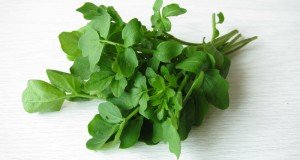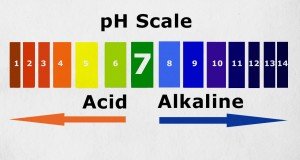Warning: Know the difference between breast cancer and benign proliferative breast disease
(NaturalHealth365) There are so many conditions that can affect a woman’s sensitive breast area that sometimes it is enough to make even a sensible person downright paranoid. It doesn’t help that many conventional doctors continues to wrongly diagnose and over-treat non-cancerous breast conditions and promote the dangerous practice of mammograms as the only option for breast cancer early detection.
With all the misinformation out there, why would you want to know about yet another set of conditions that may or may not increase your risk of breast cancer? I believe strongly that very early detection of abnormalities in the breast area is still the best way of stopping breast cancer tumors in their tracks.
Education really is the key to early detection. Therefore, obtaining the right kind of information is crucial – in order to choose a course of action based on empowered decision-making, not a knee-jerk reaction.
Understanding the conditions associated with BPBD
Dozens of non-cancerous benign proliferative breast disease (BPBD) conditions have been identified by mainstream science over the years. Here are just a few of the most common ones:
- Fibrocystic Changes (FCCs): Another name for a FCC is a “cyst.” This is by far the most common BPBD condition, occurring in 50 % of all women. Cysts mostly affect women during their menstruating years, particularly ages 30 to 50.
- Ectopic breast (mammary heterotopia): “Ectopic breast” is a term used to describe extra tissue in the breast area (usually formed during embryonic development). The general term can describe everything from accessory tissue that is unnoticeable to eye to the presence of an extra nipple or even an extra breast. Surprisingly, 6% of the population has some form of this condition, making it the most common genetic condition effecting the breasts.
- Mastitis: Mastitis is an infection of the breast. Pain, swelling, redness and heat in the area as well as flu-like symptoms are all signs. The most common form of mastitis is lactation mastitis, which occurs to breast-feeding women, but other forms of mastitis can affect non-lactating women. Granulomatous Mastitis is caused by a foreign substance or as a result of an autoimmune condition or diabetes. Although it is not common, it should be noted that inflammatory breast cancer can mimic mastitis in its symptoms, especially since, in this form of breast cancer, there is often no sign of a tumor.
- Hyperplasia: Hyperplasia is an increase in organic tissue caused by cell proliferation. Hyperplasia can occur in many parts of the body, including the uterus, gums and breasts. With typical hyperplasia, cells may look normal under a microscope.But, atypical ductal hyperplasia cells do not look normal. Where one line of cells would normally be surrounding a breast duct, for example, there may be many layers. Women with atypical ductal hyperplasia are said to be at 3.5 to 5 times greater risk for developing breast cancer.
This is important to understand: BPDP conditions are NOT forms of breast cancer. It is still important to know about them, however, since so many of them may contain early precursors to breast cancer and sometimes the factors that create them are the same ones that cause breast cancer to develop.
For example, women who use birth control pills are at a greater risk for developing cysts in their breast and are also at a greater risk for breast cancer, since “the pill” use hormones that may overstimulate breast cells in order to block pregnancy.
What you should do if you have a BPBD condition
If a conventional doctor discovers a BPBD condition in your breast area, you may be told to get a biopsy or even schedule surgery. At the very least, conventionally-trained physicians will suggest increased monitoring of your breasts through mammogram.
All of these actions will put you at higher risk of breast cancer.
There are other, safer ways to keep an eye on the situation. Thermography is a detection tool that is completely safe and non-invasive. It picks up on abnormalities in breast tissue by registering heat caused by inflammation.
What’s more, thermography can detect not only tumor growth but other red flags in breast tissue years before a mammogram often can.
Nutritional changes can also up your chances of not only reversing BPBD but also reducing your risk of breast cancer. For example, eating a diet high in fiber has been linked to less incidences of BPBD in both adult and adolescent women, according to recent studies.
Likewise, a powerful report published in the American Journal of Clinical Nutrition stated that, in thousands of cases, “every 10-g/d increment in dietary fiber intake was associated with a significant 7% reduction in breast cancer risk.”
Research has also demonstrated the link between high sugar levels, inflammation and BPBDs. Reducing your intake of inflammation-causing foods such as sweets, gluten and processed foods as well as practicing periodic calorie restriction protocols and fasting can significantly reduce these factors.
Again, remember that benign proliferative breast disease is NOT breast cancer. It is something to be aware of and monitor safely. It can also be a strong motivator for kick-starting your own healing protocol which will not only be good for your breasts, but for your entire body as well.
About the author:Dr. Veronique Desaulniers (“Dr. V”) is a best-selling author and specialist in Chiropractic, Bio-Energetics, Meridian Stress Analysis, Homeopathy and Digital Thermography. After 30 years in active practice, she decided to “retire” and devote her time to sharing her personal, non-toxic Breast Cancer healing journey with others. Her years of experience and research have culminated in “The 7 Essentials™ “, a step-by-step coaching program that unravels the mystery of healing the body. Her website and personal healing journey have touched the lives of thousands of women around the globe. To get your F.R.E.E. 7-day mini e-course and to receive her weekly inspiring articles on the power of natural medicine – visit: BreastCancerConqueror.com
References:
https://theoncologist.alphamedpress.org/content/11/5/435.long
https://www.ajronline.org/doi/abs/10.2214/AJR.13.10930
https://www.ncbi.nlm.nih.gov/pubmed/7110289
https://www.cancer.org/healthy/findcancerearly/womenshealth/non-cancerousbreastconditions/non-cancerous-breast-conditions-hyperplasia
https://cancerres.aacrjournals.org/content/74/15/4078.abstract
https://ajcn.nutrition.org/content/early/2011/07/20/ajcn.111.015578.abstract
https://www.ncbi.nlm.nih.gov/pubmed/24755474











